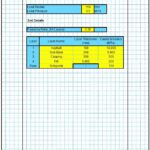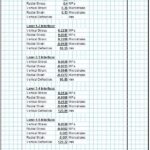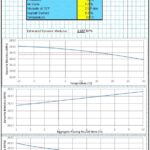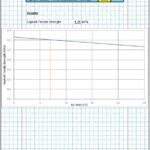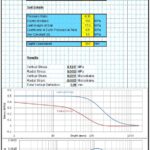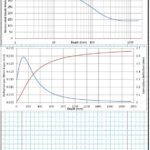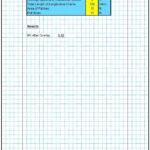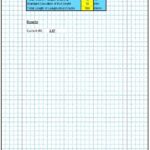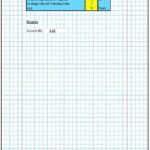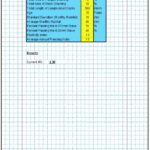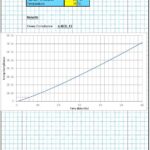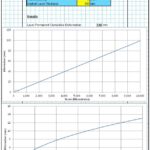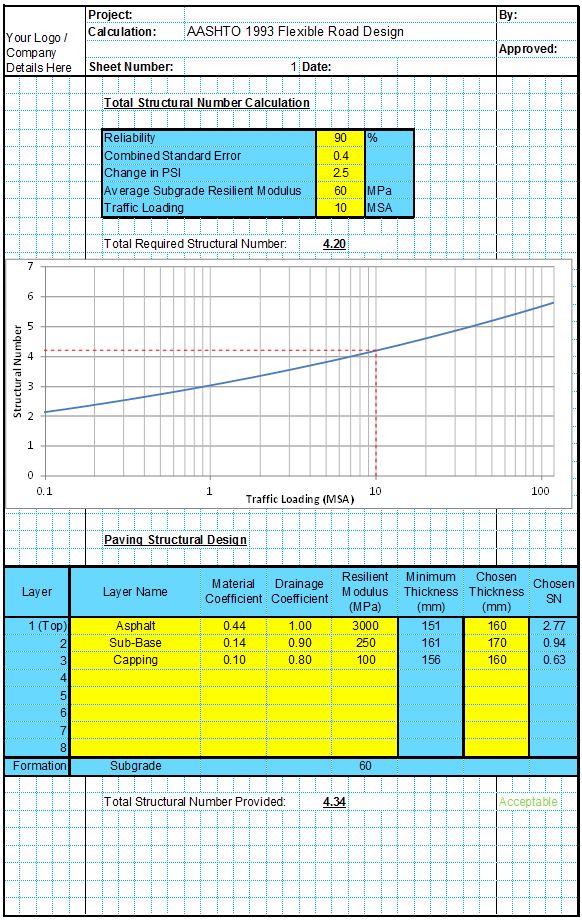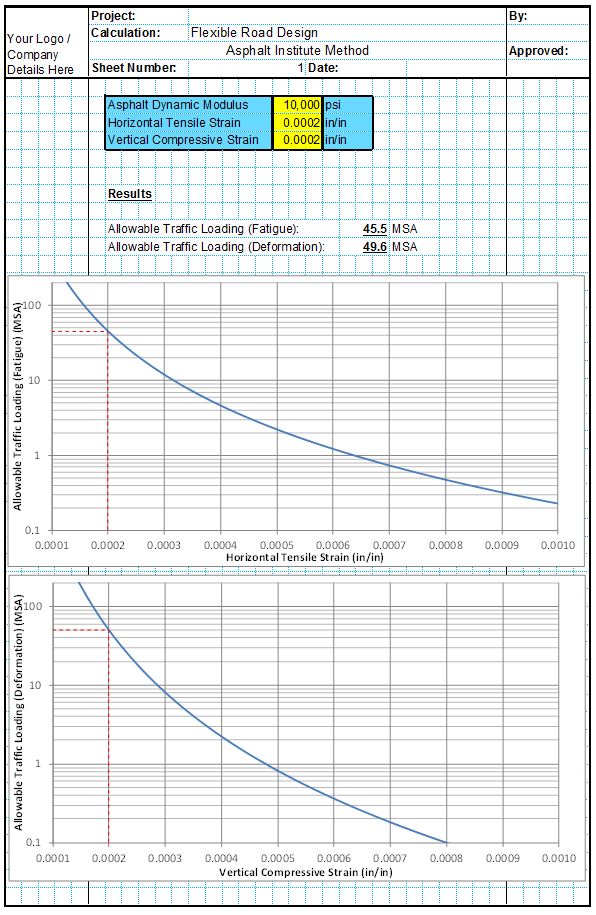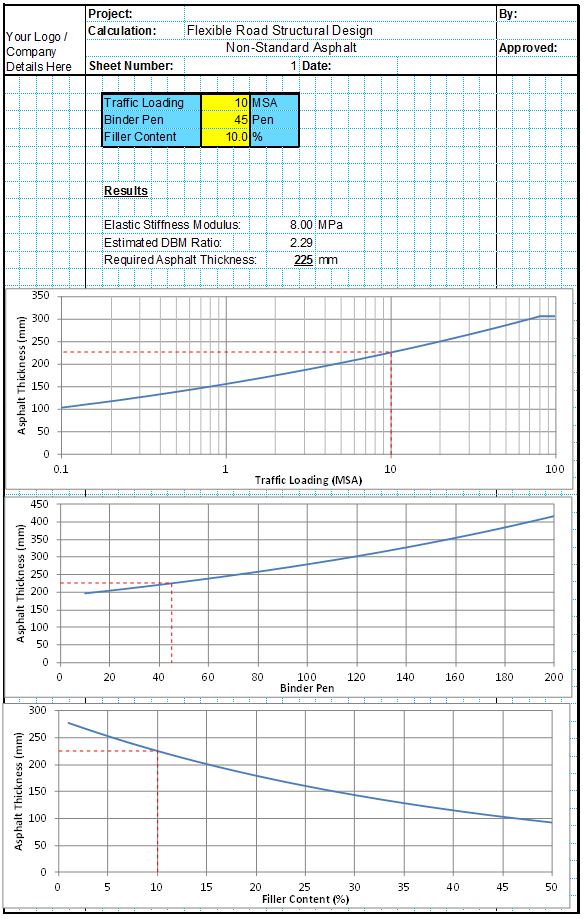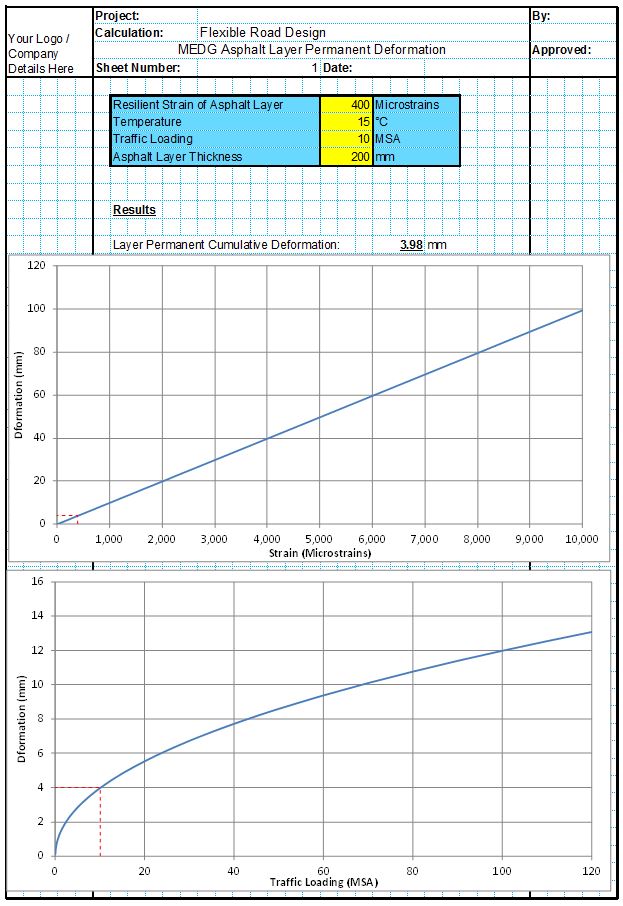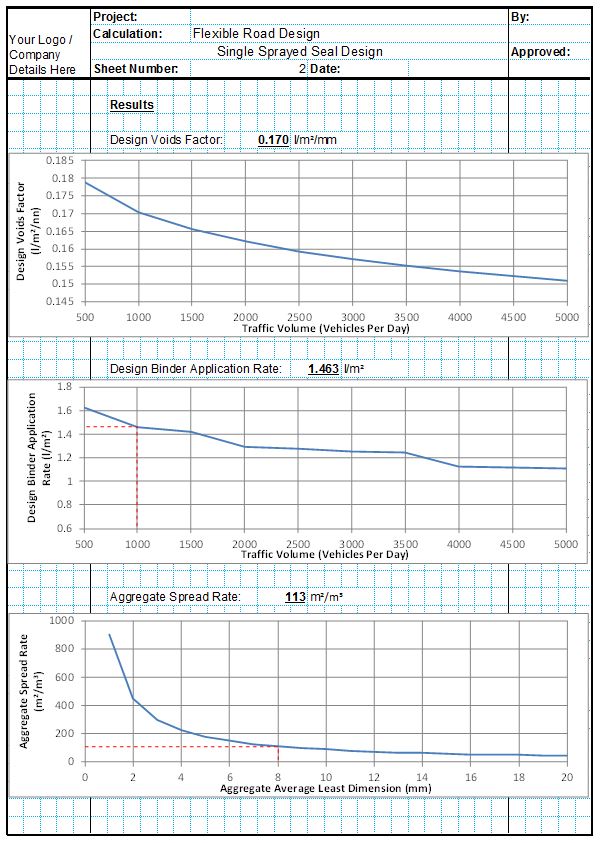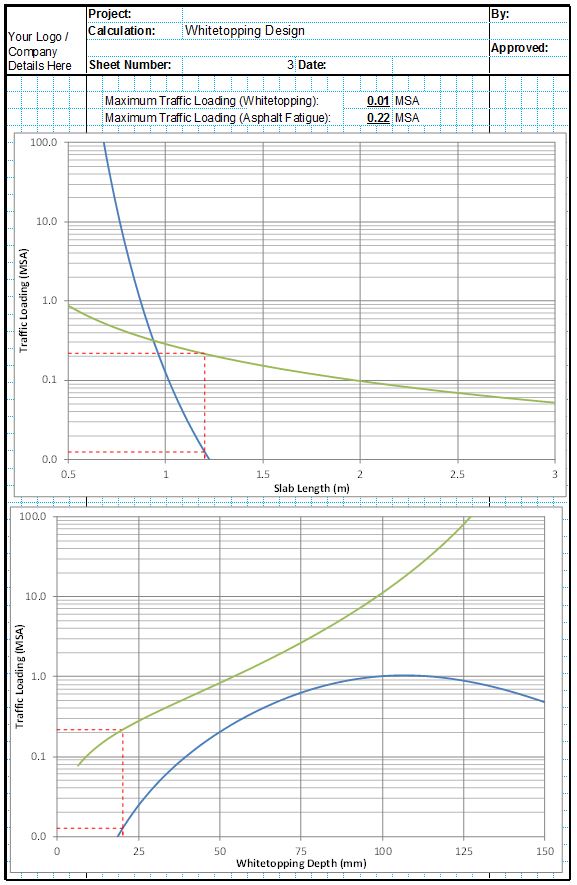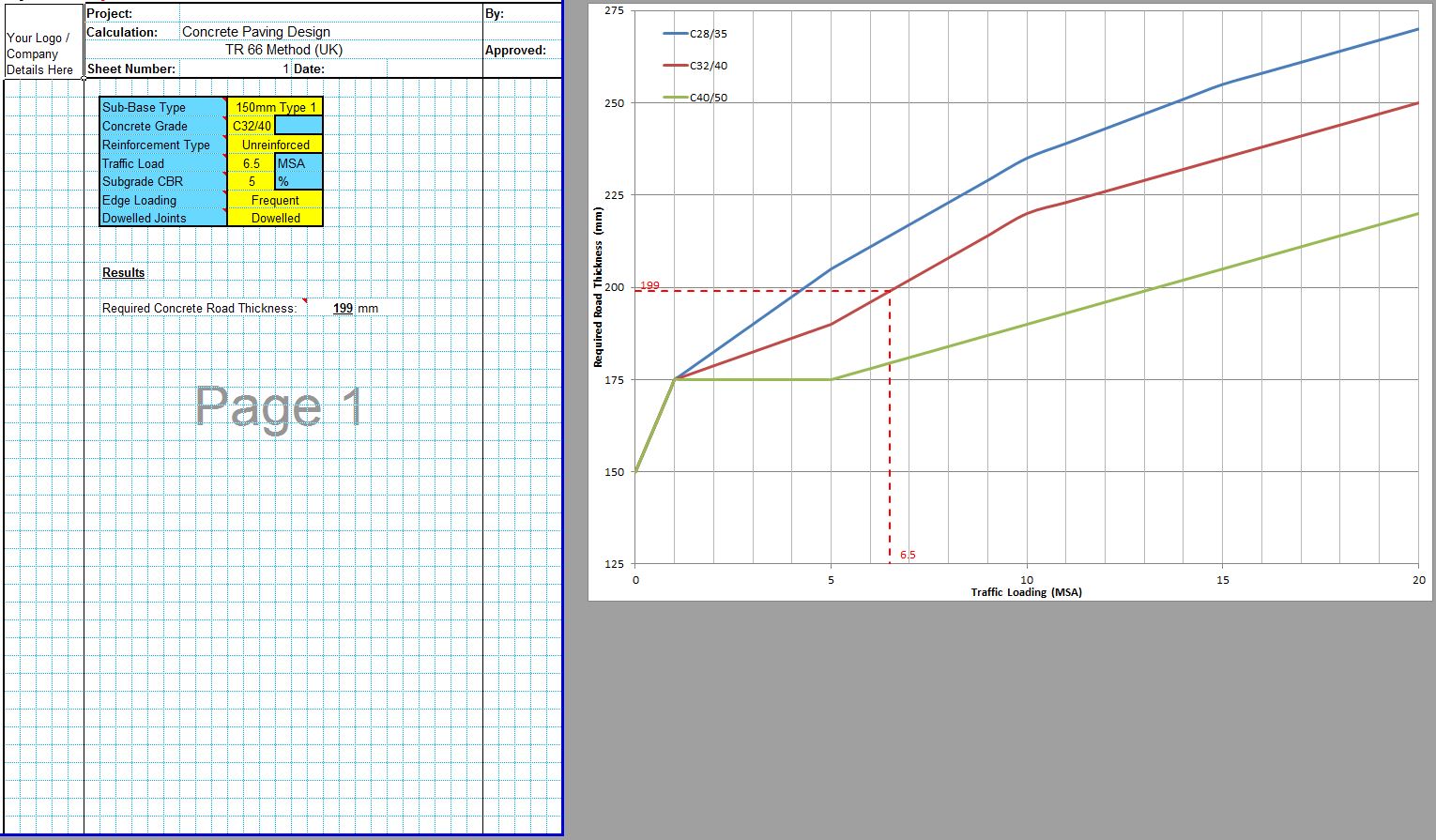The CivilWeb AASHTO MEDG Method Design Spreadsheet is a powerful collection of design spreadsheets which can be used to design flexible pavements in accordance with the AASHTO MEDG Method. This suite of spreadsheets includes 7 spreadsheets which provide all the tools required to complete a flexible road design.
The AASHTO MEDG Method of flexible pavement design is not generally suitable for hand calculation as it includes complex calculation of the horizontal strains induced in the pavement structure under load. To determine these strains a multi-layer elastic analysis must be undertaken which can take many hours to complete by hand. The CivilWeb AASHTO MEDG Design Spreadsheet suite includes a tool to complete these calculations which are then used to determine the validity of the proposed pavement design.
The CivilWeb AASHTO MEDG Design Spreadsheet suite is available to purchase at the bottom of this page for just £10. Alternatively the full CivilWeb Flexible Pavement Design Suite is available for just £20.
The AASHTO MEDG Design Method
The structural design of flexible pavements has long been determined using empirical equations. These equations were derived from road tests which recorded the loads acting on a series of test pavement sections and then recorded the damage caused by this loading. This was repeated with several different pavement constructions and design equations were derived from the results. This is the basis of the AASHTO Design Method.
Empirical equations work very well when the road and site conditions are similar to those included in the original test. However empirical designs cannot be used where site or pavement conditions deviate substantially from those used for the test. Road testing of pavements is expensive and so when pavement types began to deviate from those used in the original AASHTO Road Test new methods of design needed to be found.
The idea behind the MEDG was to make the design equations applicable to more environmental conditions and for any type of pavement construction. This required a greater understanding of the underlying mechanistic reasons behind pavement performance. After a long period of research the AASHTO Mechanistic-Empirical Design Guide (MEDG) was published and the transition from the original AASHTO method began.
The MEDG is still not 100% mechanistic in nature. While all possible efforts were made to understand the design of pavements, the model still needed to be calibrated which was done using experimental data. This is why the model is mechanistic-empirical.
AASHTO MEDG Method Design Spreadsheet - Inputs
The MEDG method is not suitable for hand calculations as it uses the strain results from a complex elastic analysis of the pavement layers as a primary input. The AASHTO MEDG Method Design Spreadsheet suite includes a powerful elastic analysis tool which completes a multi-layer elastic analysis of the proposed pavement using the Boussinesq theory.
Once the Boussinesq analysis is complete, the results are input into the MEDG method spreadsheet which determines whether the design is valid or not. The spreadsheet evaluates the proposed pavement using the three failure mechanisms included in the MEDG method. These three failure mechanisms are fatigue failure, deformation failure and longitudinal cracking failure. Each failure mechanism requires different design inputs.
Fatigue failure occurs when cracks slowly propagate through the asphalt from the base. The main design parameter for fatigue failure is the tensile strain at the base of the asphalt layer which is taken from the multi-layer elastic analysis.
Deformation occurs when the asphalt layer is slowly compressed from the top. The key parameter for deformation failure is the resilient strain and the thickness of the asphalt layer. Longitudinal cracking occurs when cracks begin at the surface. The key design parameters for longitudinal cracking are the tensile strain at the top of the asphalt layer and the dynamic modulus of the asphalt.
The CivilWeb AASHTO MEDG Design Method Spreadsheet Suite
The CivilWeb AASHTO MEDG Design Method Spreadsheet Suite includes 6 spreadsheets to allow the designer to complete the flexible pavement design. The suite includes;
- Boussinesq Analysis Spreadsheet - This spreadsheet can be used to complete a multi-layer elastic analysis of the proposed flexible pavement structure using the Boussinesq method. The results of this analysis are taken forward as inputs to the AASHTO MEDG Method Design Spreadsheet.
- AASHTO MEDG Method Design Spreadsheet - This spreadsheet takes the results of the elastic analysis and uses them to calculate the maximum design loadings for three different failure mechanisms as described above.
- AASHTO IRI Calculator - This spreadsheet calculates the pavements current IRI value from the pavement condition. This is required when existing pavements are being upgraded or replaced.
- AASHTO MEDG Asphalt Tensile Strength Spreadsheet - This spreadsheet calculates the tensile strength of asphalt using the AASHTO MEDG method.
- AASHTO MEDG Asphalt Creep Compliance - This spreadsheet calculates the creep compliance of the asphalt from the asphalt design parameters.
- Asphalt Dynamic Modulus Calculator - This spreadsheet estimates the dynamic modulus of asphalt from the static modulus or from the asphalt design parameters.
The CivilWeb AASHTO MEDG Design Method Spreadsheet Suite includes all the tools required to complete a structural flexible pavement design in accordance with the AASHTO MEDG. Unique analysis and optimisation tools allow the design to be complete in minutes.
Buy now for only £10
Or why not buy our full Flexible Pavement Design suite for only £20
Or buy our best value bundle, the full Pavement Design Suite including flexible and rigid pavement spreadsheets for only £30
Download Free Trial Version
To try out a fully functional free trail version of this software, please enter your email address below to sign up to our newsletter.
